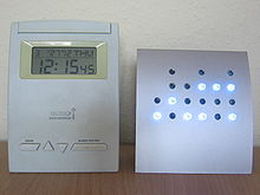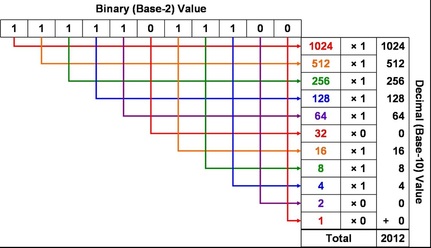
I was able to fall back on a worksheet I created my first year of teaching, meant to be sort of a reading assignment (because at that time, our building was focusing on reading comprehension among our students). Granted, I definitely need to edit this lesson and include some better images and examples, as well as expanding upon the idea of how to "carry digits" when working in a base-2 system.
Most of the emphasis on the worksheet is placed on how to convert from base-2 (binary) to base-10 (decimal) and vice versa though.

"Write 2012 in binary form."
Luckily, my students had access to a TI-Nspire CX CAS which has a quick function to allow them to make the conversion, but they came away from the contest wanting to know more about how binary numbers work and if other similar systems exist.
Another crowning achievement through all this discussion is that students understand the t-shirt design I have posted at the back of my classroom that says "There are 10 types of people in the world: those who understand binary and those who don't."
--Keltner--
 RSS Feed
RSS Feed